The screening of the GOOD DESIGN AWARD 2021 was implemented by the "Screening Units", the groups by design category. Here are the review texts by the Units including the trends, features or goals to aim of the category.

-
Product Designer
- UNIT 01 : Accessories and Wearable
01-01 Accessories and personal items | 01-02 Accessories and personal items for professional use | 01-03 Clothing
Unit 01, which covers “things you wear,” strongly reflects the present COVID-19 crisis. It was also an opportunity for me to meet wonderful products that showed what users want, what the creators should create, and how they developed it with their imaginative powers. This was an ironic outcome from the COVID-19 disaster, which forced people to “live” their out-of-the-ordinary lives. But it also seemed to be the reverse side of the high expectations for the design of the familiar “things you wear” that make everyday life possible.
This is symbolized by the surge in the number of entries for face masks this year. We evaluated them as items used in everyday life that are produced with consideration for the skin or make-up, or that ensure smooth respiration during exercise, excluding a capability like N95 from essential requirements. As a result, nearly 10 face-mask-related products received the award, in recognition of their efforts to deliver some rich value to days with face masks, based on their unique viewpoints and technologies. In terms of infection control, the disposable medical PPE “easy detachment gown” (21G010040) was also highly rated. In times of confusion in the medical field, the company developed the product immediately and supplied it to the market with ideas that only a plastic bag manufacturer can think of. Such actions taken in quick cooperation to realize a desirable society are in line with this year’s theme of “aspiration and action with consideration.” In addition, as products for essential workers, “Comodogear i2” (21G010047) for workers under the blazing sun was highly evaluated. In this way, we welcome the delivery of excellent designs to people who support the foundation of life from the viewpoint of QOL. Reducing traffic accidents is also a social issue, and Honda's traffic safety advice robot “Ropot” (21G010038) will raise a question about this issue. The proposal that mobility manufacturers themselves should bear the responsibility to create a society without the expression “7-year-old issues” received high praise.
Unit 01 saw particularly many mature products, such as wristwatches, bags, clothing, etc., and as a result, many of these areas seemed to have been appropriately improved rather than producing entirely novel items. That evolution is very important, however, now that we are able to open the way for the future with our “Design” even while facing many social issues, we look forward to new proposals that move our minds in the future.

-
Design Innovation
- UNIT 02 : Personal Care
02-01 Wellness and massage items | 02-02 Sanitary goods | 02-03 Beauty care equipment and instrument | 02-04 Childcare goods and accessories | 02-05 Household childcare items | 02-06 Household nursing and rehabilitation equipment
For the healthcare unit, last year marked the beginning of the age of thoughtful lifestyle.
It was a year of awakening in which one came face to face with oneself, and moved to new actions.
It was also a year that generated a large swell in which we reconsidered true abundance, and redefined our way of life.
In the 2021 healthcare unit, it seems that this great swell was propagated and spread with diversity. I would like to explain this year’s trends and summarize them by introducing some prominent themes.
The first theme is “Design as an act of deep compassion.” I have always said that “design” is compassion. This “smart KID belt” (21G020076) addresses the dangers that young children are exposed to, and created true safety for them by making a seatbelt that could be adjusted to fit small bodies of children, which were often overlooked because of standardization. This is a good example of incorporation of deep compassion into a design.
The second is “desired design.” In other words, it is a design with a purpose.
The next case is an example in which a local company worked as one to create value by generating powerful questions of why and what for, before they thought of what to make. As a token of gratitude to Aizuwakamatsu City, the “Aikushi” (21G020087), which was created by combining the technologies of local companies, has embodied their desired design.
The third is “design of beautiful process.” In recent years, Taiwanese companies have shown remarkable performance.
Above all, “AROMASE” (21G020083) has stood out. AROMASE is B corp certified, and the first circular company in the hair care industry in Asia to receive a Cradle to Cradle bronze certification. Acquisition of these certifications means being a good company that has a positive impact on the environment. What does it mean to design a beautiful process? This means that the company’s “identity” and sense of beauty, including the way employees work every day, the manufacturing process, relationships with stakeholders and local communities, and the global environment, permeate among all the people involved, and they are moving toward their vision. The days of mankind are composed of processes. If processes are beautiful, they naturally produce beautiful results.
Based on the above, I believe that when creating something, it is important to start considering the three perspectives by using the subject “we,” rather than just “I.” In other words, rather than separating individuals from other individuals, from regions, and from nature, we should think and create as if they exist all together. The accumulation of such simple actions may lead mankind to a future that should be contained in the “aspiration and action with consideration.” We sincerely hope for a future in which more people will create values in a thoughtful manner.
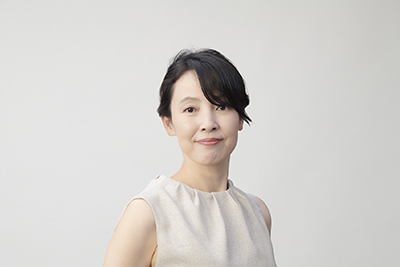
-
User Experience Designer
- UNIT 03 : Stationery and Hobby
03-01 Stationery and office supplies | 03-02 Teaching materials and educational supplies | 03-03 Toys | 03-04 Sporting goods | 03-05 Leisure/Outdoor/Travel goods | 03-06 Hobby goods and pet care supplies | 03-07 Garden tools | 03-08 Musical instrument
It was the second year that we conducted screening with many restrictions imposed by the COVID-19 disaster. Although there were many cases in which it was difficult or impossible to bring the items in, we received many entries from Japan and overseas. The entries related to stationery and hobbies covered by this unit included proposals to make mature products, which are already familiar, more suitable for people’s lives, as well as outdoor goods developed from a completely new perspective. In particular, there were many innovative proposals from overseas.
Giving a GOOD DESIGN AWARD is also giving the item an “endorsement” and we, the Judges, feel responsible for it all the time. For example, if a tool provides a completely new leisure experience, its safety and coexistence with society will also be subject to screening. Entries with weak proposals in those perspectives, or that had not expressed such proposals in the screening materials clearly enough, were not given awards even though they might offer an incredible experience. In addition, some entries regrettably missed the award, as their way of proposal were not optimal and the values of the proposals were not conveyed to the recipients, even though they were made in accordance with people’s thoughts or problems and had social significance. In other words, there is a good chance that they will win the award in the future by acquiring evidence through accumulated sales results and pursuing better expression and technology. We look forward to seeing their further progress. On the other hand, I felt that when it came to some products, it was time to reconsider how the products themselves should be, along with the changing society.
Additionally, seven “GOOD DESIGN BEST100” were selected from this unit. None of these innovations were flashy, but they were created as a result of sincere efforts to address current social issues and to face people, and were particularly excellent in providing quality experiences and pleasure. Another characteristic of this year’s BEST100 is that there is “room” that is left to the users to think. It seems to indicate that, in the present day, people require things that can flexibly respond to diversifying lives and values of mankind.
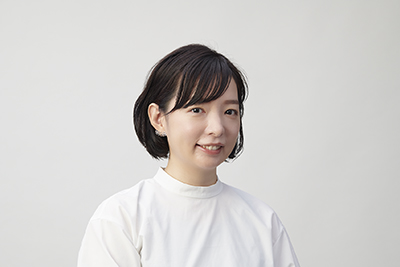
-
Creative Director / Product Designer
- UNIT 04 : Household Goods
04-01 Kitchen goods, cookware, tableware and cutlery | 04-02 Daily necessities | 04-03 Cleaning goods | 04-04 Emergency supplies | 04-05 Bedclothes | 04-06 Religious supplies
Unit 4 covers household goods such as kitchen goods, cleaning goods, emergency supplies, and bedding. In Japan, plastic bag charge has become a common practice, and as people around the world are more and more aware of environmental issues, users now choose items more carefully and make efforts to prevent any increase of waste. Under these circumstances, it is natural that many people commonly demand higher quality items, and thus this year’s screening was more rigorous.
There are already a lot of great items out there in this category, and it was not easy to select winners of a GOOD DESIGN AWARD from many items that have been improved for decades, such as fully-established kitchenware, tableware, cleaning goods, and bedding. Among them, items that have overcome this barrier make people think, “How did it still have room to evolve like this!”. For example, “supasupa” (21G040270), which is included in this year’s BEST100, has evolved from well-developed bubble wrap to “hand-cut bubble wrap.” This attempt pursuing users’ convenience amazed the Judges and resonated with them. What was common among the award winning items was that they were improved from various angles, such as the design and user-friendliness, in accordance with the users’ thoughts by reading the tide of the times.
On the other hand, there are still many developing categories, such as environmentally friendly items and emergency supplies. Although we are pleased that the number of environmentally conscious items has increased significantly, we still have the impression that this field is in its infancy, and there are only a few items that have a good balance between functionality, design, and price. With regard to emergency supplies, the overall evaluation was low, especially in terms of design. I hope that, one day, good designs will support society particularly in times of calamity when people feel low. Both eco-friendly products and emergency supplies are in high demand, and therefore we look forward to seeing more of them in the future.
In recent years, along with the increased number of remote workers, people are paying more attention to the inside of a house. Consequently, lifestyles and values of people have changed greatly, as can be seen in more frequent sterilization with alcohol due to the COVID-19 disaster. There is a possibility that a field that seems to be fully improved and matured can be redeveloped with a new perspective. I look forward to seeing new items that surprise me in the future.
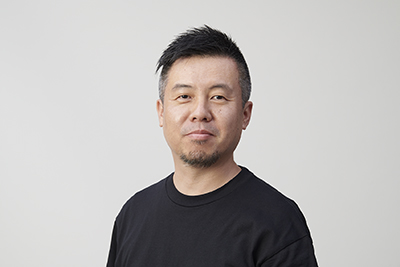
-
Designer
- UNIT 05 : Home Appliances
05-01 Cooking appliances | 05-02 Home appliances | 05-03 Environmental appliances and equipment
These days, we all must be sensing the rapid changes in the way people live and work. Under such circumstances, we considered the way household appliances, screened items of Unit 5, should be. Most household appliances are mass-produced by companies. Considering this, in this category, I think we must select products that take the lead in tackling various issues in the market. This is because even if the impact of each product is insignificant, tens of thousands or even 100,000 pieces of household appliances sold and used will have a great impact as a whole and have a great potential to change societies for the better. On the other hand, manufacturers must bear responsibility for such an impact, rather than just producing the products. Each product must have its own role and value. Based on this idea, we, the Judges, considered what design should be, and what is required from design though the products submitted for screening.
Many consumers would no longer want to purchase new items to replace old ones frequently. What they want is products they can customize and use for a long period of time, which leads to reducing environmental impacts.
What does true usability mean? It is not just about whether buttons are easy to see or press. We can not say appliances are easy to use unless they are able to respond to user’s demands, such as what they want to do or how they want to use them.
The issue on the reduction of the environmental burden must be addressed as soon as possible. However, it is not possible at present to replace all the materials for products with recycled ones immediately. Then, we can start with a small but definite step, such as reducing the printing on packages.
All the designs that attracted attention from the Judges during the screening process clearly showed “question” and “answer” in them. To produce unique answers to everyday questions and implement them throughout the product. In other words, there is a clear thought in manufacturing, and designs that come out of it “form” things. I felt from the entries I screened that the ideal form of household appliances that are required now was created based on this idea.
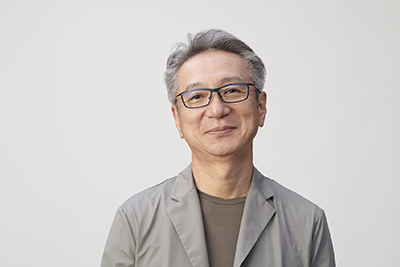
-
Industrial Designer
- UNIT 06 : Audio, Video and ICT Equipment
06-01 Audio equipment for personal use | 06-02 Broadcast and sound equipment for professional use | 06-03 Camera and peripherals | 06-04 Video equipment | 06-05 Smart phone and peripherals | 06-06 Smart watch | 06-07 PC and peripherals | 06-08 ICT equipment for the general public | 06-09 ICT equipment for professional use
Unit 06 evaluates video, audio, and ICT equipment. These products communicate the value of themselves through sight, hearing, and touch, and are tied very closely to technologies behind them. It has been a long time since the term IoT was heard for the first time, and Bluetooth and 5G are now commonly used. Products have not changed as much as the world has. In particular, acoustic equipment such as earphones and speakers, whose sound sources are mostly smartphones, was remarkable, and screening was not easy. However, among them, there were many products that showed overwhelming amount of passion for manufacturing by utilizing the assets accumulated by the manufacturer’s original technology and history. Typical examples are single-lens cameras and video cameras for professionals and high-level amateurs. “CANON EOS R3” (21G060399), “FUJIFILM GFX100S” (21G060403), and “Sony Cinema Line: VENICE/FX9/FX6/FX3” (21G060411), which were selected for BEST100, each have a distinctive appearance based on different thoughts and modeling techniques that are suitable for taking high-level photos and videos, and entice us to pick them up. Once you pick any of them up, you will be fascinated by the touch of the buttons and the dial, the operation sound, and the illumination. What to change, what to retain, and what to add are exquisitely selected by facing the nature of the products, and I felt that each brand’s philosophy has been directly reflected in the product.
On the other hand, video playback products and information terminals such as TVs, smartphones, and computers mainly focused on applications, and the majority of the products were preoccupied with the screen. Therefore, it was hard for the manufacturers to show originality, and this was in contrast with the case of cameras. Among them, “Sony Xperia PRO” (21G060468) seemed to be a breakthrough. In recent years, terminals have been simplified, and smartphones have found a way to become a communication medium and a high-resolution monitoring device for improving the efficiency of video production work by connecting with photographing equipment through HDMI terminals and transmitting high-resolution and high-speed data utilizing 5G. While many smartphones are targeted at ordinary consumers as if they follow suit, this product has raised our expectations that smartphones will expand to other domains, such as healthcare, and create new social value through telecommunications in the future.
Among those famous, long-established manufacturers, “Kandao Obsidian Pro” (21G060435) overwhelmed the Judges. This is a 12K 360-degree 3D VR camera with 8 fisheye lenses, but it is worth noting that a venture company has built an imaging device with such perfection in an unprecedented product area. The company has been highly evaluated by Judges from other fields, and has made a stir in a field that hardly allows new entrants.
Most of this year’s screened items are likely to have been outdated in five, or even one or two years. As technology changes, they will be finished as products, but I feel like using products like the previously mentioned optical equipment for a long time. A product that can break the loop from consumption to disposal with its users’ attachment to it, which is an answer to social issues such as environmental burden.

-
Industrial Designer
- UNIT 07 : Equipment and Facilities for Manufacturing and Medical Care
07-01 Working tools and instruments | 07-02 Agricultural tools and equipment | 07-03 Equipment and facilities for production and manufacturing | 07-04 Medical equipment and facilities | 07-05 Materials and parts | 07-06 Manufacturing and production technique | 07-07 Equipment and facilities for research and experiment | 07-08 Other product for medical use and manufacturing
As a unit review, we changed our perspective slightly and focused on the current position of a product in its growth process. In any development process, there is a period when it is easy to become a topic, such as first release or major innovation, and a period when it grows, strengthens, and spreads, but with little visual change. More than 10 years after a big jump, we were able to see outcomes of development that has been steadily taking root in societies and daily lives as a result of continuous evolutions that has taken place during that time.
FUJIFILM’s advancement in the medical field is well known, but as one of their themes of development, there was an innovation to change X-ray film into a DR image element panel about 10 years ago. The company has been developing devices by applying the features of the panel, and this year, they submitted as entries their improved DR panel (“FUJIFILM DR CALNEO Flow” (21G070646)), which is the base of the system, and two portable inspection machines utilizing the improved panel. They all are excellent products, not as sensational as a jump from analog to digital, but they enjoyed a high level of popularization in terms of improving healthcare.
Another theme of FUJIFILM is 3D visualization of 2D data from CT and MRI. The boundaries between organs, which are difficult to understand in tomographic images, are displayed three-dimensionally by color like illustrations in a picture book. 3D visualization was announced in 2013 and has been deployed in over 60 applications, and this year, FUJIFILM submitted as entries their updated basic system “SYNAPSE VINCENT Ver.6.1” (21G070658) and a radiotherapy software, one of the applications. As one of the 60 applications, the jump may be small, but the realization of applications that use deep learning and AI to support radiotherapy, the frontline of cancer treatment, has made a significant contribution to the enhancement of healthcare.
For industrial equipment, we focused on drones. Drones have an unexpectedly long history, but started coming up in conversation from 2010, when toys became popular. After that, while the period of temporary frenzy has passed, the development of drones has continued and their industrial use has steadily increased. This year, there were several entries. One of the purposes was for use in high-rise buildings and other places where it is difficult to transport materials by land. The second one was for disaster prevention, with consideration of strong wind, long flight, and water protection. The third one was exclusively for video creators. We were able to see all three pillars of industrial use of drones: logistics, disaster prevention, and imaging. After 10 years of talking about them, we felt that they had grown and spread as products that contribute to society and daily life.
In the medical and industrial sectors, this year was about performance rather than making a jump. In our screening, we would like to evaluate not only major innovations and topicality, but also actual social implementation.
Finally, a common trend in this unit is that the primary goal was to reduce the workload on workers, and many developments led to greater efficiency from there . Achieving a balance between efficiency improvement and work style reform through technological innovation is an effort leading to achievement of SDGs, and I could sense the high motivation of each company.
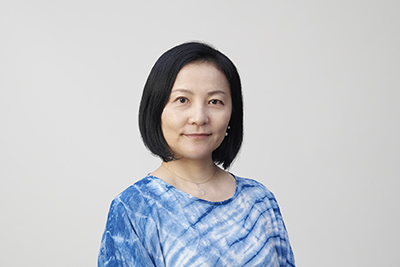
-
Product Designer
- UNIT 08 : Housing Fixtures
08-01 House lighting appliances | 08-02 House air conditioning machines/fixtures | 08-03 House building materials/fixtures | 08-04 House interior materials | 08-05 House exterior materials | 08-06 Kitchen fixtures | 08-07 Bathroom and wet area | 08-08 House machines/fixtures
Unit 8 mainly focuses on housing fixtures and products. These include air conditioning equipment, lighting equipment, hot water supply equipment, wet area fixtures, home controllers, exterior and interior materials of buildings, and exterior and window materials.
There were more entries related to COVID-19 this year than last year. One is ventilation products such as windows and air conditioners to prevent viruses from remaining in the house. In particular, air-conditioners with a ventilation function performed well despite the requirement for more difficult designs than conventional products that control only the air inside houses. The other is to keep residents from coming into contact with viruses. They include anti-viral flooring materials, faucets with improved sterilization and cleaning functions, and delivery facilities for home delivery services that reduce contact with visitors. In addition, there were many private rooms in the house, which were indirectly adapted to work at home to prevent the spread of infection. In addition, there were entries of a power charge system from a car to a house, as home evacuation is an effective way to evacuate during an infectious disease epidemic. Consequently, the importance of the system as a housing facility was identified, although the number of entries was small.
COVID-19 had a great impact on our lives. Such products for infectious disease control will continue to be developed in the future. But there are still some products that seem to be not quite right. We hope that designs will be natural and suitable for the living space.
The overall impression of the award winning products was that they were simple and pleasantly beautiful for users to use for a long time, including maintenance. Being able to use a product for a long time is important from the viewpoint of achieving SDGs. Another outstanding product that gave us a strong impression was an air conditioner (21G080707) that measures a person’s biological response with a sensor and uses AI and apps to provide a comfortable environment for the person in each season. It is expected that such functions of housing equipment to provide detailed care to people will be pursued in the future.
In addition, there were some good products such as dampers with function control and sound-proof vibration-proof drainpipes, which play an important role although they are not visible from outside. I could feel that Japan’s solid manufacturing continued to evolve.
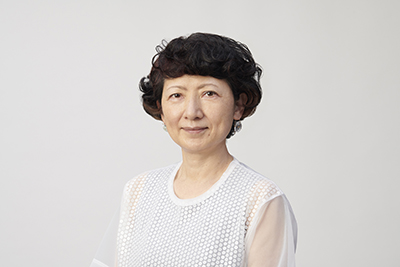
-
Interior Designer
- UNIT 09 : Furniture / Equipment and Facilities for Office and Public Space
09-01 Home furniture | 09-02 Furniture for shop, office, public space | 09-03 Display furniture for shop and public space | 09-04 Equipment and facilities for public space | 09-05 Kitchen equipment and facilities for professional use | 09-06 Equipment and facilities for professional use | 09-07 Building materials and equipment for commercial space
In Unit 9, we evaluate equipment and furniture for households, offices and public spaces. As the range of commercial goods is widely diversified, we place emphasis on expanding the possibility of designs in addition to the conventional evaluation viewpoint. In addition, at this timing, there was a difficult judgment about commercial products handled in a group in the public space. I imagine that many projects were commenced before the COVID-19 pandemic.
In a time of uncertainty, there are many issues to be addressed, such as environmental issues, SDGs, and disasters. A number of companies have made drastic changes. I admire their speed and flexibility.
I would like to clarify the characteristics of this year’s entries with two key words.
“Weight saving” is one of the keywords in response to the above problems. Flexible and diverse use is required for both households and offices, and the pursuit of light weight is an effective way to make a product easier to handle. It is also expected to save resources, reduce the burden of transportation, and lower costs. “CYNARA” (21G090835) has had a significant weight reduction with the target of “weight saving” as part of efforts to tackle environmental problems, while maintaining functions, and as a result it fits the way of ABW (Activity Based Working) and greatly reduces CO2 emissions. This thought of development will greatly affect the future.
The next keyword is “de-disposal.” This means reduction of waste by flexibly corresponding to the way to use, and by leading to long-term use. (Furniture, sofa, beds, etc.) There was also an idea of sharing sorting and disposal with users. (Sofas, mattresses, etc.) There was a trend to recognize SDG 12 “Responsible consumption and production,” and share negative things with everyone in order to change them into new values.
With regard to commercial products with public perspective, “withCUBE” (21G090897) is a unit product that makes it possible to install clean toilets anywhere. It is useful for improvement of working environments for people working in distribution warehouses, for using building stock, and in times of disaster. It is also considerate of people with disabilities and gender. “rapid rescue” (21G090904), a stretcher that disappears into the wall, “omoio universal seat YU-2” (21G090905), a universal seat that can be used by anyone from children to the elderly, and “Weltz-EV” (21G090836), a wheelchair that supports the elderly and people with disabilities whose lower limb function is impaired when working at the office, are good examples of how designs ease various social problems. It was very regrettable that the Tokyo Paralympics were held without spectators and that I had no chance to meet people with disabilities. I hope that designs can support opportunities to see those people more casually. The spirit of the Paralympics, “to make use of what we have,” can also be applied to designs.
Lastly, I hope that the appearances will be designed with consideration to be acceptable for anyone.
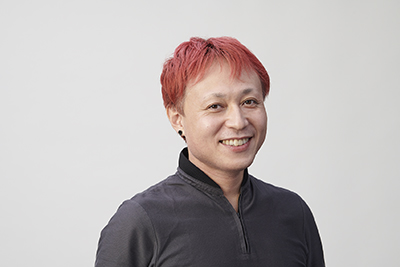
-
Creative Communicator
- UNIT 10 : Mobility
10-01 Passenger car, Passenger car-related instruments | 10-02 Commercial vehicle, Commercial vehicle-related instruments | 10-03 Motorbike, Motorbike-related instruments | 10-04 Personal mobility and bicycle, Personal mobility and bicycle-related instruments | 10-05 Railway, Shipping, Aircraft | 10-06 Transportation system and service (logistics / physical distribution)
I think the award winning objects of the Mobility Unit have responded to the theme of this year’s GOOD DESIGN AWARDs, “aspiration and action with consideration,” from various angles.
As exemplified by the term “motorization,” products and services related to mobility have continuously expanded their power and evolved in a one-direction, civilized, and material sense, as one of the main means of achieving affluence in people’s lives. Ironically, COVID-19, which has been raging since last year, gave people a chance to reconsider the meaning of moving. In the field of mobility, it also seems that new breath is being infused by halting, looking back, and reflecting.
One of the most notable examples of this is the development of the idea of giving new value to old items and things that can still be used, as seen in several award winning objects. Though acquisition of sustainability is an urgent and common issue for all mankind, I felt that the Applicants have not just focused on the ethical aspect but also found comfort, enjoyment, and new value in tackling the issue and tried to actively work on it. That is very encouraging.
As was the case last year, various proposals were made to solve the chronic labor shortage in the logistics industry. A wide variety of approaches have emerged, including the truck (21G100935) which have changed its design concept to reduce weight drastically and ensure load capacity; the towing tractor (21G100937) which uses automated driving technology to improve labor-intensive operations; and the system (21G100998) which aims to improve transportation efficiency through sharing. I sensed an image of the future where various approaches organically cross and produce one whole ecosystem.
In the railway field, which has tended to fall into a one-way service due to its highly public nature, there were also proposals showing a new trend, such as the long-distance train (21G100945) which encourages interaction between people encountered in trains and at stations along the way, and the high-speed railways (21G100947) which involved users from the planning stage in an effort to promote interaction.
Even in the field of mobility, which requires a large amount of energy for change, it is clear that there is a strong tendency to change, and that the chain reaction is beginning.
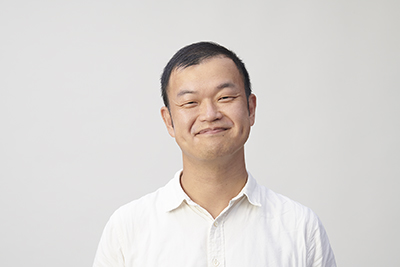
-
Architect
- UNIT 11 : Housing (Detached House and Small Sized Housing Complex & Cohousing)
11-01 Commercial/industrialized housing | 11-02 Detached house | 11-03 Small sized housing complex | 11-04 Small sized cohousing / dormitory | 11-05 Construction method for housing | 11-06 Service and system for detached house and small-sized housing complex / HEMS(Home Energy Management System) | 11-07 Interior for detached house and small sized housing complex
This year, we had many interesting works in the “housing and small sized housing complex” category. There are several reasons for this. One of the major characteristics was that there were many excellent entries from local house makers across Japan. It may be that the decline of local communities has begun to be visible nationwide, and efforts to create new ways of living in local communities have been accelerated in order to survive.
What surprised me was that the efforts behind the designs made by house builders and construction companies were nothing like cheap tricks, but the quality of space configuration was high, and many of the ideas were considered from the viewpoint of local production and local consumption. I felt that the overall quality of design was improved. There were many projects carried out in cooperation with forestry and local manufacturing, and I felt great sympathy for them. For local house builders, purchasing land is also important, but there were many cases in which persuasive proposals with quality of space were integrated into unique local environments such as cliff line land and rural scenery.
Many projects in urban areas were not just architectural works, but had a viewpoint of area management, such as how to renew urban life, housing typology, and community planning. These projects resonated with us in our inter-unit discussion. There is no doubt that urban life will undergo a major value change due to the effects of the COVID-19 disaster.
It has been 10 years since the Great East Japan Earthquake and 5 years since the Kumamoto Earthquake, and there were several entries of projects that are aspiring to create new value for the future, departing from the reconstruction phase.
There were many technical proposals, but many of those included enclosure of existing technologies and unreasonable construction methods. In addition, there were some cases where the durable life of houses was assumed to be short, which concerned me. It has already been revealed that enclosure of technologies and patenting makes future building renovations difficult. Open manufacturing is in line with the ideas of the age of the environment. In addition, extending durable life of buildings is an issue that everyone should seriously address. We look forward to seeing beautiful ideas that have tectonic rationality and are open to the public.
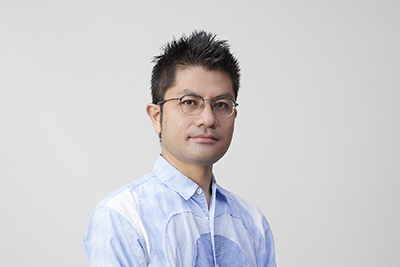
-
Architect
- UNIT 12 : Housing (Medium to Large Sized Housing Complex & Cohousing)
12-01 Medium/large sized housing complex | 12-02 Medium/large sized cohousing / dormitory | 12-03 Service and system for housing complex/HEMS | 12-04 Interior for medium to large sized housing complex
This year, Unit 12 seemed to have some new trends.
What stood out was dormitory projects. There were several very high-level proposals. The clarification of the scope of Units 12 may be a factor, but it can also be seen as a reflection of recent circumstances in which work and living are close to each other, such as the enhancement of employee benefits, the promotion of employee interaction, and establishing relationships between employees outside the workplace. With regard to dormitories, common areas were one of the appeal points, the same as with shared houses, so various attempts were systematically made. Considering the length of period for designing and construction, many of the dormitories in this year’s screening were planned before the COVID-19 pandemic. I look forward to seeing if there will be any changes next year and later.
The use of wood for middle-rise and high-rise buildings was seen last year, but this year, the situation seemed to be improving. There were a variety of legal interpretations, designs, and structures, and they all fascinated me. It is difficult to start experimental projects in this unit, but it is very interesting to see each company’s unique challenges. We hope this domain will continue to accelerate, if possible.
And while it was by no means a large percentage of the total, there were impressive efforts made by communities. In some projects, construction companies even offered business proposals and area management, taking the situation which forced them to take on new challenges in the shrinking market, unlike in urban areas, as an opportunity. I think this will be one of the guideposts in regional development in the future.
On the other hand, there were some points I was concerned about with regard to overall quality. Particularly, in presentation materials, basic information such as layout and floor plans was not available, and in some cases the overall plan was not clear. It is a pity that we are not able to fully understand a good plan despite its good quality. We would like to know as much as possible about projects to screen, because we value all entries. I look forward to seeing next year’s entries.

-
Architect / Professor
- UNIT 13 : Construction (Industry and Commercial Facility)
13-01 Construction and environment for office and industrial facility | 13-02 Interior for industrial facility and office | 13-03 Construction and environment for commercial facility | 13-04 Interior for commercial facility and shop
In the “Unit 13: Industry and commercial facilities,” many projects, such as commercial facilities, hotels, and offices, have a short consumption cycle even though they are buildings. This is probably the reason why there are so many projects which have antennas all over the world, import novel “established modes” quickly, then modify and refine them, rather than going through the tedious process of observing society and finding the appropriate form. This year, we have seen some of these traditional approaches, some of which are expensive, some of which are high quality thanks to advanced technology, but they were not very compelling.
This is because it has already become clear that readjustment of existing forms cannot adequately respond to a myriad of changes in social conditions, such as the proximity and multi-centralization of work and living spaces through remote work and reform of work styles, the emphasis on natural ventilation and the decrease in unit population density due to the spread of COVID-19, the shift from new construction to the use of existing stocks, and climate change phenomena such as torrential rains and global warming.
Against this backdrop, there are several distinct projects that attempt to create new forms and methodologies by architects themselves interpreting the world, or even to redefine the function of architects. Specifically, there are examples such as the introduction of new building types that suit the recent lifestyles and ways of working, the renovation of existing office buildings that went beyond indoor design to reorganize the relationship with the city, the involvement of architects in the management and ordering side of medium to large commercial facilities that try to return profits to the community by going beyond the site area, and the construction of a relationship of trust with a local government over a long period of time in order to preserve the historical culture and landscape of the region and even change the direction of development.
In any case, it seems that those works were highly evaluated because they were created through a process in which architects who confronted the changing world had rare ideas and tried to find a new architectural style and an ideal function to realize it. It was a year of calamity that will go down in history, but it was because of this period that the true meaning of architects and designers was reconfirmed and gained sympathy. This year’s screening made me consider the originality that resonates and propagates.
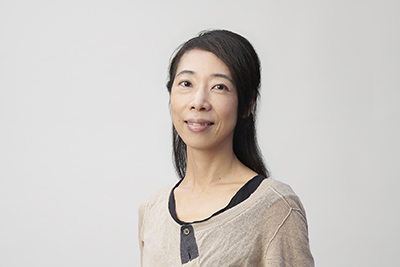
-
Researcher in Urbanism
- UNIT 14 : Public Facility, Civil Structure and Landscape
14-01 Construction/space design for public facility | 14-02 Interior for public facility | 14-03 Landscape, civil engineering structures | 14-04 Block and community development | 14-05 Construction method for industry, commercial, public facility
This year, we did not see a very clear trend in Unit 14. One reason for this is that it is difficult to see a sudden change in the “architecture (public facilities), civil structures and landscaping” which takes time from planning to completion, despite perceptions of social issues and people’s values having changed rapidly since the COVID-19 pandemic.
Unit 14 covers a wide range of areas, including architecture, civil engineering, landscape, interior, development, signage systems, and construction, all of which are public in nature. Therefore, the screening was conducted not only in terms of beauty, novelty, and whether problems are solved on the site, but also in terms of the significance and potential for the community and society. From this point of view, with population and construction opportunities declining, there seems to be an increasing tendency that the functions of public facilities are becoming more complex, or construction opportunities are overly purposed and used to respond to too many issues all at once.
On the other hand, it made me think about the relation between public nature and innovation. In recent years, public spaces have attracted so much attention that it can be called a boom. In addition to parks, plazas, streets, and waterfront areas, cultural facilities, educational facilities, and administrative facilities provide a central space for relaxation and exchange. Of course, this should be welcomed, but I find it strange that styles and sceneries become somewhat similar. Among them, “Johnson Town” (21G141330) and “Baiko Gakuin University The Learning Station CROSSLIGHT” (21G141250) are not places to be chosen by everyone, but they showed their intention to seek their own public nature (it might be more appropriate to call it commonality) and to embody it in the space. I found it very enjoyable. It is a diverse public nature in which each person creatively seeks the way society is shared with others, rather than a mediocre public nature defined by someone. We would like to see more “good” public spaces in the near future.
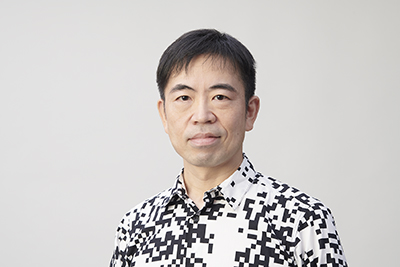
-
Creative Director
- UNIT 15 : Media and Contents
15-01 Media | 15-02 Contents for the general public | 15-03 Contents for business | 15-04 Method for advertising/PR | 15-05 Exhibition / display | 15-06 Branding / CI / VI | 15-07 Font | 15-08 Packaging for the general public | 15-09 Packaging for professional use
As the COVID-19 disaster has had a major impact on design, media contents, packaging, and branding are domains subject to an irreversible major change.
In packaging, for example, it is becoming more and more difficult to accept gaudy designs, because presently, customers find products through e-commerce or direct commerce rather than in store. Packaging needs to be designed based on the relation between the product and user during use, considering the origin of the brand, how it is distributed, and even the inside of the trash can after use. This year’s award-winning package designs were a step ahead in that regard.
Branding, and contents for it, now, no matter how beautiful and rich they are, are hard to reach in a society with anxiety. Users are more careful than ever about which brands they should be with. I feel that, this year, contents that clearly show their existence, and have stories such that users can develop a relationship with them incorporating various experiences seem to have had an advantage.
Under these challenging social situations, people tend to have more of long-term sentiments, such as wanting to live in a safe and good society someday and to change the environment for the better. But we cannot get there overnight. At times like this, the media tend to be flooded with unreliable information, and people’s anxiety is likely to increase. The role of the design of the media contents domain is to pick up the user’s short-term sentiments of wanting to relieve anxiety, enjoy, and be satisfied, and to link them to the action of satisfying long-term sentiments. It is delicious and good for the environment. It is fun and nourishes culture. This year, I think I have found some designs that have a good balance between ephemerality, sociality, and functionality.

-
Urban Designer / Collective Designer
- UNIT 16 : System and Service
16-01 Application, software for the general public / apps for smartphones and tablets | 16-02 System/service for the general public | 16-03 Insurance/financial service and system | 16-04 Software for professional use | 16-05 System/service for professional use | 16-06 Social infrastructure system / infrastructure
System and service, the theme of Unit 16, tend to attract projects that directly reflect social trends. This year again, we had a wide range of entries, from new business models to inclusive activities, and social implementations of industry, government, and academia.
One of the trends I felt throughout this year’s screening was the increasing resolution of digitization. The days when digitization alone is worthwhile have gone. And in recent years, what to digitalize and why have been questioned. Various DX projects were also evaluated highly for their comprehensive service designs that scrutinized where in the overall business they were improving efficiency and where people were putting their energy. For example, “Hacobell Connect” (21G161483), a logistics platform, and “Safe and comfortable accident resolution process with the best mix of human and digital” (21G161445) of Tokio Marine & Nichido Fire Insurance Co., Ltd. fall under this category.
The second is the integration of the real world and digital. There was a glimpse of the true worth of the physical world connecting to digital space. For example, a 3D urban model “PLATEAU” (21G161467) constructs a digital twin in cooperation with GIS data registered in each municipality, and enables various urban experiments that cannot be simulated in the real world. “Locatone” (21G161395) has the potential to change the way a city is used without developing a physical space, by superimposing a new sound world on the real world with Sound AR.
The third is the expansion of projects for an inclusive society. Among them are “NAVITIME for Baby” (21G161427) (I hope this will be implemented on the standard app), which has begun to incorporate information on how to solve problems associated with traveling with children into navigation services, and an online theater “THEATRE for ALL” (21G161459), which specializes in accessibility and aims for “everyone’s theater.”
I also strongly felt that environmental recycling activities are a prerequisite for each project.
Encouraged by various social changes, the balance between people, the environment, and the economy is undergoing a major reassessment, and I was encouraged by the many projects that sought to find new solutions through the fusion of technology and the power of humanity. I hope that this is a sign of the next generation of infrastructure, and we will continue to work together to design society.
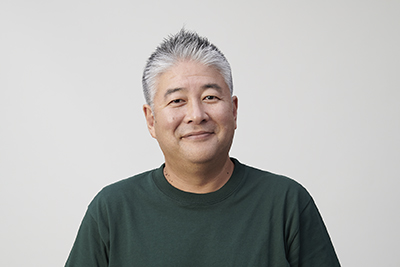
-
Artist
- UNIT 17 : Initiative and Activity for Regional
17-01 Initiative and activity for regional | 17-02 Initiative and activity for community development
In this unit, which divided the major category used up to the previous year, we conducted screening focusing on “region,” with particular attention to the following 5 viewpoints.
1) Does it focus on essential social issues?
2) Are the content and mechanism original?
3) Are the expression and deliverables (output) beautiful?
4) Does it have continuity and previous results?
5) Does it attract as much empathy as it is recognized as a good design by the whole society?
With regard to 3), we believe that it is more important to eliminate noise in order to convey the thoughts and values in the efforts, rather than to provide superficial beauty. On the other hand, if the project has a weakness in that point, the intention of the design will be difficult to convey, so that it will be difficult for we Judges to make judgments.
Regarding 4), even when it was a new project, the screening was conducted in consideration of whether or not the company had a perspective or a mechanism to continue the project, and what can be passed to the next step by carrying out the project.
I think the following trends were observed in this year’s entries.
1) Activities related to locations, such as the formation of bases and the utilization of idle land
2) Activities to explore identity and foster local culture
3) Activities that connect people using some mechanism
A typical example of 1) is the “Old Bazaar Rejuvenating Project” (21G171516) in an old shopping district in Kaohsiung, Taiwan. This is an effort by young local people to attract stores, which will be responsible for the next generation, to shopping streets that have become empty due to the aging of shopkeepers. Young people and the elderly have started to interact naturally and have succeeded in revitalizing the streets.
With regard with 2), “The action of the salmon cultural in the Iyoboya kaikan, ‘Sake no gochisou’” (21G171493) showed a straightforward example. In order to pass on the “salmon culture” rooted in this area to the next generation, they made recipe books and had them kept in each home. This project was well appraised for their careful activities to foster culture from the kitchen.
As for 3), I would like to introduce “HIDASUKE!” (21G171520). This is a good example of increase in social capital and population as a result of the establishment of a system to disclose the various problems faced by the aging population of Hida citizens and to receive help from people across the country.
The projects that received high evaluations, including those mentioned above, have in common that the faces of the people involved can be imagined. The earnest actions toward the local community will generate empathy among the people and eventually become a great swell and create a future.
We strongly feel that many initiatives that are in line with this year’s theme of “aspiration and action with consideration” are spreading nationwide. We look forward to further efforts to continue them and the next development that brings hope to society.

-
Businessman / Editor
- UNIT 18 : Initiative and Activity for the General Public
18-01 Initiative and activity for the general public | 18-02 Awareness improvement for individual and public | 18-03 Awareness improvement, management method and Initiative for industry | 18-04 Education/promotion/support method | 18-05 Research and development method
Unit 18 screened “activities and projects for the general public.” In recent years, there have been an increasing number of entries that are evaluated typically higher among other award winning items, and the trend of the year can be seen clearly in this unit.
In this year’s Unit 18, there has been a big change. That is, designs for vulnerable people were highly evaluated. Up to now, there have been some cases evaluated highly in the domain of welfare. But most of the cases that have been highly rated in this year’s screening were related to vulnerable people in some way.
Unit 18 screens a wide range of areas and also covers a broad range of domains. As a result, we decided to discuss and confirm each of the important points carefully in the screening process. Because of the characteristics of Unit 18, the Judges are from a mixed team of various experts, and they talked with each other carefully many times while confirming their detailed meanings and interpretations. It took a long time, but that let us read in depth, and new discoveries were made between us.
The key points often discussed in the screening were whether they embodied “beauty,” “novelty,” and “achievements.” Presence of “social significance” was also at least as important as these. On the other hand, those that had a significance but had no beauty or novelty were not appreciated. Everything has meaning and justice. However, it is often difficult to achieve these as they are. I think that is where design has a part to play.
This year, I think that the highly rated designs for vulnerable people were intended to naturally connect the world and these people. Something you can feel in your everyday life. Something that naturally leads to support. Something that is sublimated to new value. How can we connect something meaningful to the world? Design can be very powerful in such situations.
It is said that the Internet has killed a big story and broke it into pieces. This may not be an issue for entertainment and hobbies; however, there are still many more tasks to share with many more people. We hope for “design of inclusion” that will embrace our society.


